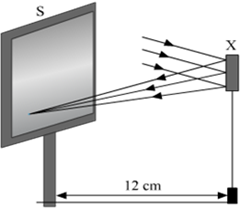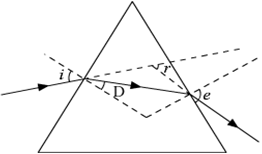 Multiple Choice Questions
Multiple Choice QuestionsA student adds 2 mL of acetic acid to a test tube containing 2 mL of distilled water. He then shakes the test tube well and leaves it to settle for some time. After about 5 minutes he observes that in the test tube there is:
A clear transparent colorless solution
A clear transparent pink solution
A precipitates settling at the bottom of the test tube
A precipitates settling at the bottom of the test tube
A student Prepared 20% sodium hydroxide solution in a beaker to study saponification reaction. Some observations related to this are given below :
(I) Sodium hydroxide solution turns red litmus blue
(II) Sodium hydroxide readily dissolves in water
(III) The beaker containing solution appears cold when touched from outside
(IV) The blue litmus paper turns red when dipped into the solution
The correct observations are :
I, II and IV
I, II and III
Only III and IV
Only III and IV
Hard water is not available for an experiment. Some salts are given below :
(I) Sodium chloride
(II) Sodium Sulphate
(III) Calcium chloride
(IV) Calcium Sulphate
(V) Potassium chloride
(VI) Magnesium Sulphate
Select from the following group of these salts, each member of which may be dissolved in water to make it hard.
I, II, V
I, III, V
III, IV, VI
III, IV, VI
A student identified the various parts of an embryo of a gram seed and listed them as given below:
(I) Testa
(II) Plumule
(III) Radicle
(IV) Cotyledon
(V) Tegmen
Out of these the actual parts of the embryo are
I, II, III
II, III, IV
III, IV, V
III, IV, V
Four students A, B, C and D reported the following set of organs to be homologous. Who is correct ?
Wings of a bat and a butterfly
Wings of a pigeon and a bat
Wings of a pigeon and a butterfly
Wings of a pigeon and a butterfly
Study the following diagram and select the correct statement about the device ‘X’:

Device 'X' is a concave mirror of radius of curvature 12 cm
Device 'X' is a concave mirror of focal length 6 cm
Device 'X' is a concave mirror of focal length 12 cm
Device 'X' is a concave mirror of focal length 12 cm
A student has obtained a point image of a distant object using the given convex lens. To find the focal length of the lens he should measure the distance between the :
lens and the object only
lens and the screen only
Object and the image only
Object and the image only
For students P, Q, R and S traced the path of a ray of light passing through a glass slab for an angle of incidence 40° and measured the angle of refraction. The values as measured by them were 18°; 22°; 25° and 30° respectively. The student who has performed the experiment methodically is
P
Q
R
R
After tracing the path of a ray of light through a glass prism a student marked the angle of incidence ( i), angle of refraction ( r) angle of emergence ( e) and the angle of deviation ( D) as shown in the diagram. The correctly marked angles are:

i and r
i and e
i, e and D
i, e and D
 Short Answer Type
Short Answer TypeWrite the name and formula of the 2nd member of homologous series having general formula CnH2n.